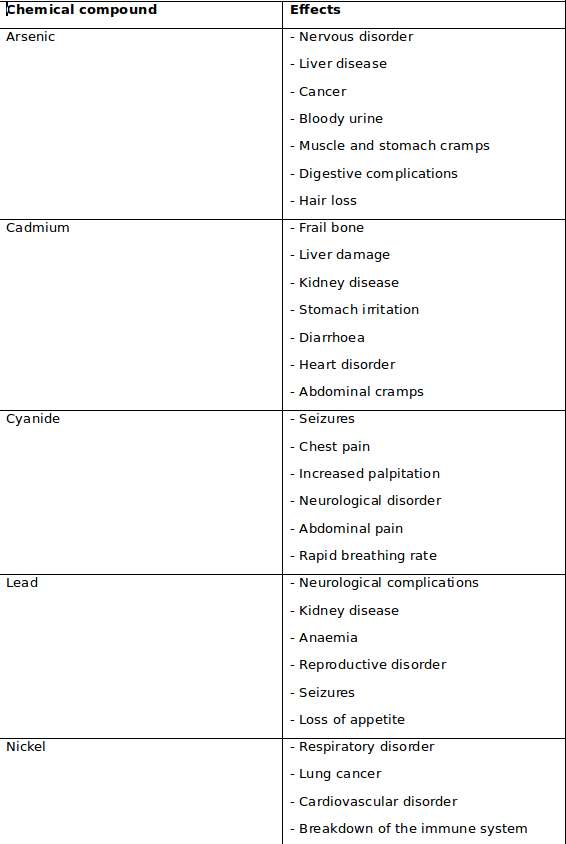Whenever you walk into a local restaurant or have your favorite meal served, the urge to squelch hunger pangs or derive pleasure in the savory taste of the delicacy set before you will most likely take precedence over every other thing. Then, you do not get to think about what had gone into the food [you are about to munch] in the process of preparation; talk less of considering the hygienic standard observed by those preparing the meal. But the truth remains that it is highly probable for harmful substances to find their way into our meals - it could be from the condiments used or the careless exhibited by the cooks.
While certain contaminants traceable in foods may be taken care of with the application of heat - as the food is being cooked - or by your immune system which puts up a fight against these foreign bodies, there are a whole lot more (contaminating agents) that do not given in to heat or get broken down by the digestive machinery present in the human body. These chemicals could be cancerous or cause damages to certain internal organs.
Incidents of food-poisoning is quite rampant in our society today, and a lot of people have been caught in the web. Not so long, the analysis of some samples of fufu (a popular stodge made from cassava flour) in a research bankrolled by TheNation Newspaper, revealed the presence of toxic substances like detergents, chlorine, arsenic, cadmium, lead, nickel, iron and cyanide. You may not be a chain smoker or an alcoholic, but some of these chemicals are capable of making you suffer the same fate (as a chain smoker) if care is not taken - though it should be stated here that some of these substances [like zinc, iron and chlorine] could be beneficial to the human body when present in minimal concentration or as trace element; they were however present in the fufu in concentrations that are harmful to human health.
The table below shows possible effects that can ensue from ingesting the chemical compounds mentioned above
Arsenic:
- Nervous disorder
- Liver disease
- Cancer
- Bloody urine
- Muscle and stomach cramps
- Digestive complications
- Hair loss
Cadmium:
- Frail bone
- Liver damage
- Kidney disease
- Stomach irritation
- Diarrhoea
- Heart disorder
- Abdominal cramps
Cyanide:
- Seizures
- Chest pain
- Increased palpitation
- Neurological disorder
- Abdominal pain
- Rapid breathing rate
Lead:
- Neurological complications
- Kidney disease
- Anaemia
- Reproductive disorder
- Seizures
- Loss of appetite
Nickel:
- Respiratory disorder
- Lung cancer
- Cardiovascular disorder
- Breakdown of the immune system
Even with the table given above we have not even started scratching the surface as there are host of contaminants - ranging from bacteria to fungi, parasite, toxic substances, etc - that have been implicated in cases of food-poisoning.

A call for caution
According to a report on the website of the World Health Organization (WHO), 1 in every 10 persons, falls victim of food-poisoning every year with over 400,000 deaths being recorded. Focusing on the home-front; an article published by Punch online revealed that an estimated 1.5 million persons suffer food-poisoning every year. Putting all these together with the increasing incidence of chronic/terminal diseases - though terminal diseases are not about food-poisoning alone - one would agree that there is a need to be more cautious about what he/she eats. If possible, you should do a thorough check on the food and the ingredients used in making the meal. More so, the mode of cooking should also be carefully considered - I hope to discuss this in a subsequent session.